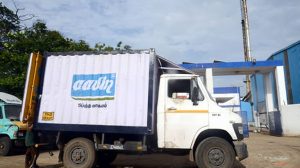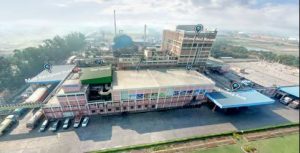
The Union ministry of jal shakti on Monday said the issue of Ludhiana’s Buddha Nullah required a multi-sectoral approach involving different departments of the Punjab government. Replying to a query raised in the Rajya Sabha by MP Satnam Singh Sandhu, who is also the chancellor of Chandigarh University, the ministry noted that the state government’s department of health and family welfare had not conducted any assessment on the carcinogenic nature of the drain along its basin.

Sandhu asked the ministry about the measures taken to reduce the pollution in the Sutlej river, the steps to control pollution in Buddha Nullah and if any study had been done on the cancer-causing nature of its water.
The 14-km polluted stream carries domestic and industrial waste before merging into the Sutlej river at Walipur village. Highlighting the steps taken to reduce the water pollution in the Sutlej, the ministry replied, “The Punjab government has undertaken the Buddha Nullah rejuvenation project with financial assistance from the ministry of housing and urban affairs under the Atal Mission for Rejuvenation and Urban Transformation (AMRUT) scheme. The project includes setting up sewage treatment plants (STPs) with 225 million litres per day (MLD) capacity in Jamalpur and 60 MLD in Balloke, rehabilitating four STPs in Bhattian and Balloke and establishing two effluent treatment plants (ETPs) for wastewater from Haibowal and Tajpur Road dairy complexes.”
The ministry further stated that to prevent and control industrial discharge from small and medium-scale dyeing industries in Ludhiana, common effluent treatment plants (CETPs) with capacities of 40 MLD, 50 MLD, and 15 MLD had been made operational. Other scattered dyeing units have their captive ETPs. “Additionally, a CETP for electroplating units is operational, ensuring no untreated industrial waste is discharged into Buddha Nullah. To mitigate pollution from dairy complexes, the Punjab Energy Development Agency (PEDA) has undertaken a bio-gas plant project at Tajpur dairy complex. Furthermore, 200-cusec fresh canal water is discharged from the Sirhind canal into Buddha Nullah to check pollution levels,” the ministry stated.
Successive governments in Punjab have failed to clean the stream. Social activists allege that the drain’s water, consumed by several underprivileged people living near its banks, causes cancer, stomach and skin diseases.
Environmental activist Jaskirat Singh, criticising the ministry’s response, said, “This reply doesn’t add anything new. Waste is still being dumped into the Buddha Nullah and people living nearby are drinking this contaminated water. If the Punjab government alone can’t handle this crisis, the Centre should step in and help.”
You can now read the most important #news on #eDairyNews #Whatsapp channels!!!
🇮🇳 eDairy News ÍNDIA: https://whatsapp.com/channel/0029VaPidCcGpLHImBQk6x1F

















